Simulation Like You’ve Never Experienced Before
UbiSim virtual reality (VR) provides a high-fidelity simulation experience so that nurse learners can improve clinical judgment within a realistic setting.

UbiSim Aligns with Industry Standards
UbiSim VR aligns with the International Nursing Association for Clinical Simulation and Learning (INACSL®) Healthcare Simulation Standards of Best Practice (HSSOBP™).
Setting Up Your VR Space
UbiSim provides complete visual and haptic immersion, compatible with commercially available Meta headsets and controllers. You’ll need:
At least one computer and one VR headset. We recommend a minimum of three VR headsets per 50 learners.
A clear 7x7 foot space, free of obstacles and people, to ensure safety during simulation for the learner using VR.
A laptop or desktop computer with Windows/Mac operating system and Chrome browser. No software installation required.
A facilitator to operate the computer, either in the same room as the VR learner or remotely.
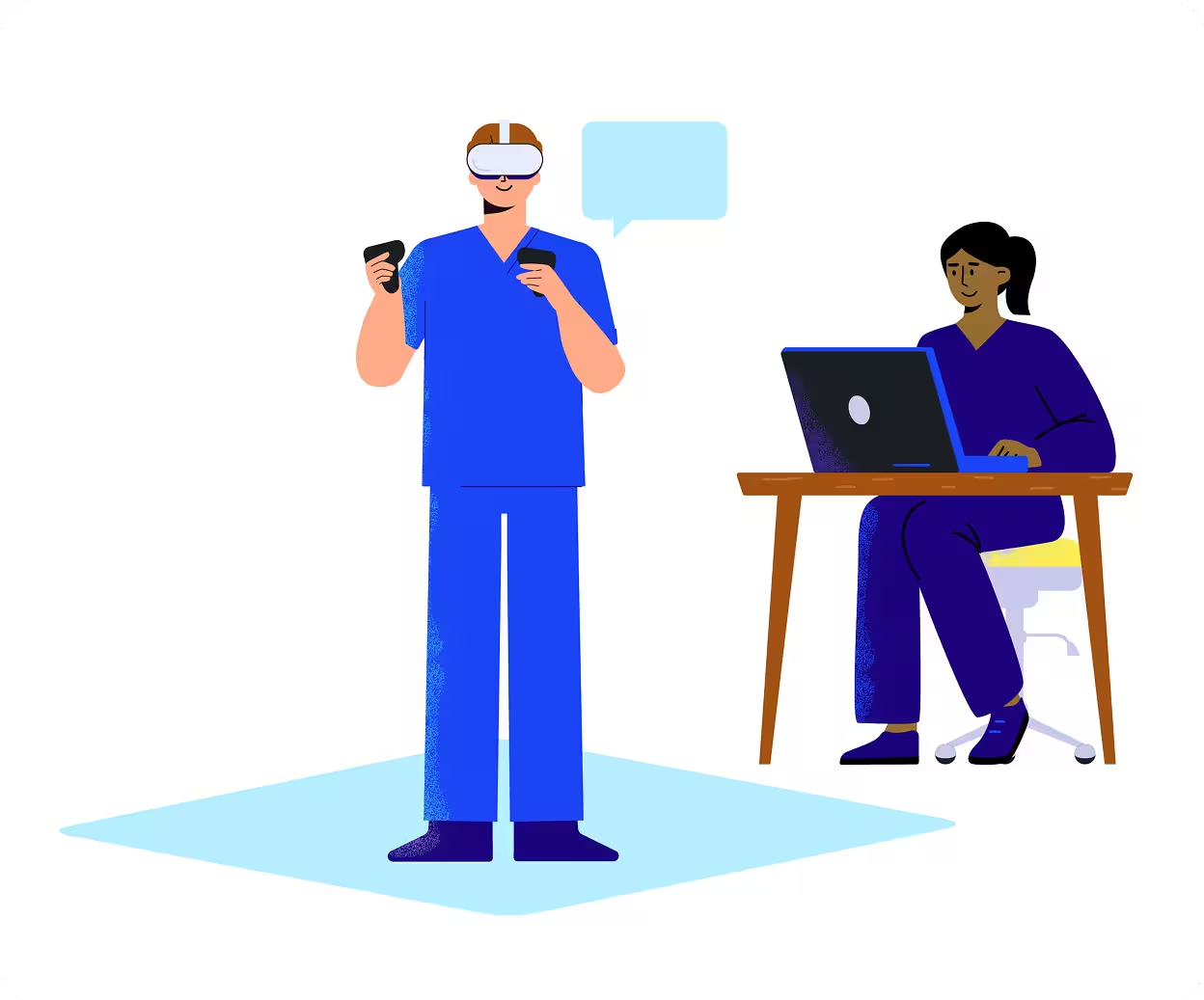
Enhance Flexibility with Multiple Types of Facilitation
UbiSim is designed to be versatile, allowing for flexibility in adoption and use within the curriculum.
Peer-to-Peer
Learners take turns participating in the simulation in small groups, alternating roles between the active participant who cares for the VR patient, the learner triggering the preset dialogs on the computer, and the active observer taking notes.
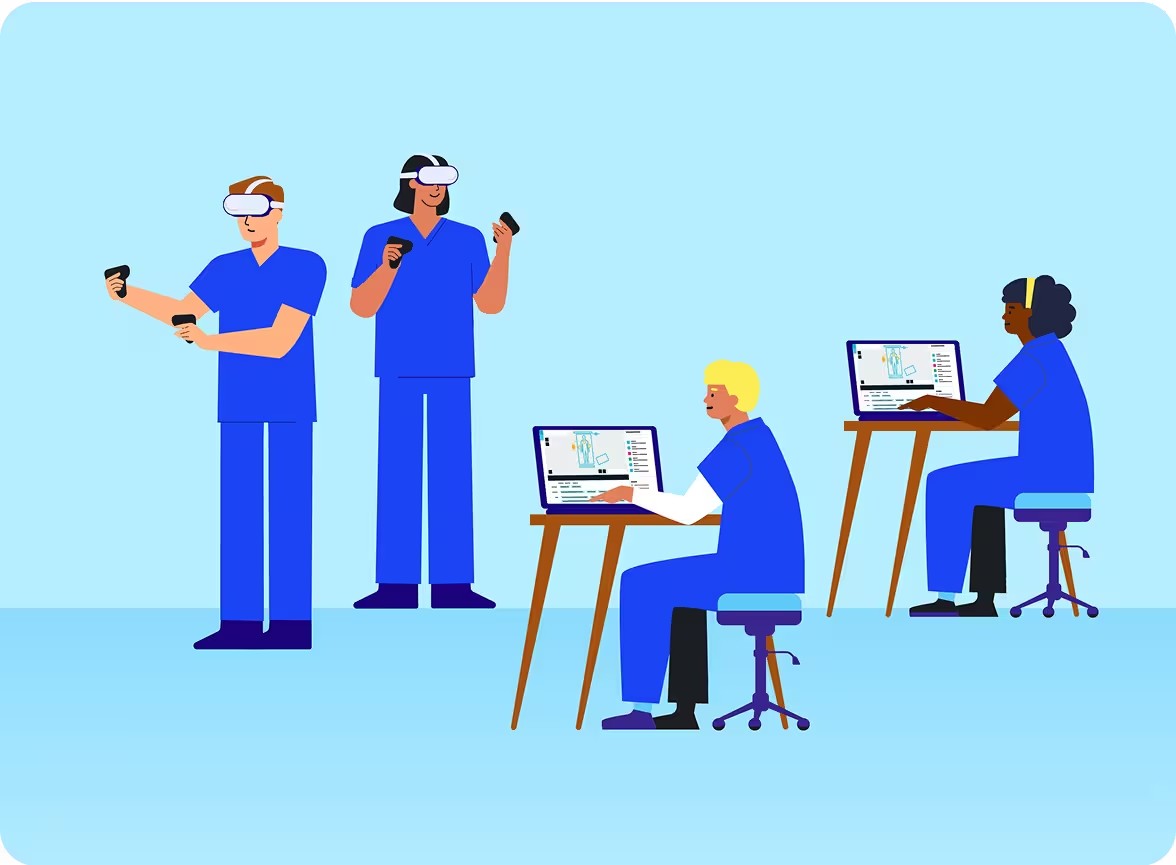
Staff-Led
A facilitator triggers the dialog of the patient, other characters, and provider while an active participant cares for the patient. The facilitator screen or learner’s headset view can be cast on a large screen so observers can watch as events unfold and collaborate in the decision-making process.

Multiplayer
Up to 3 active learners can collaborate together in the same simulation, with the ability to hand each other objects like stethoscopes, assess the patient, and share information in real-time. This model challenges students to function within teams.
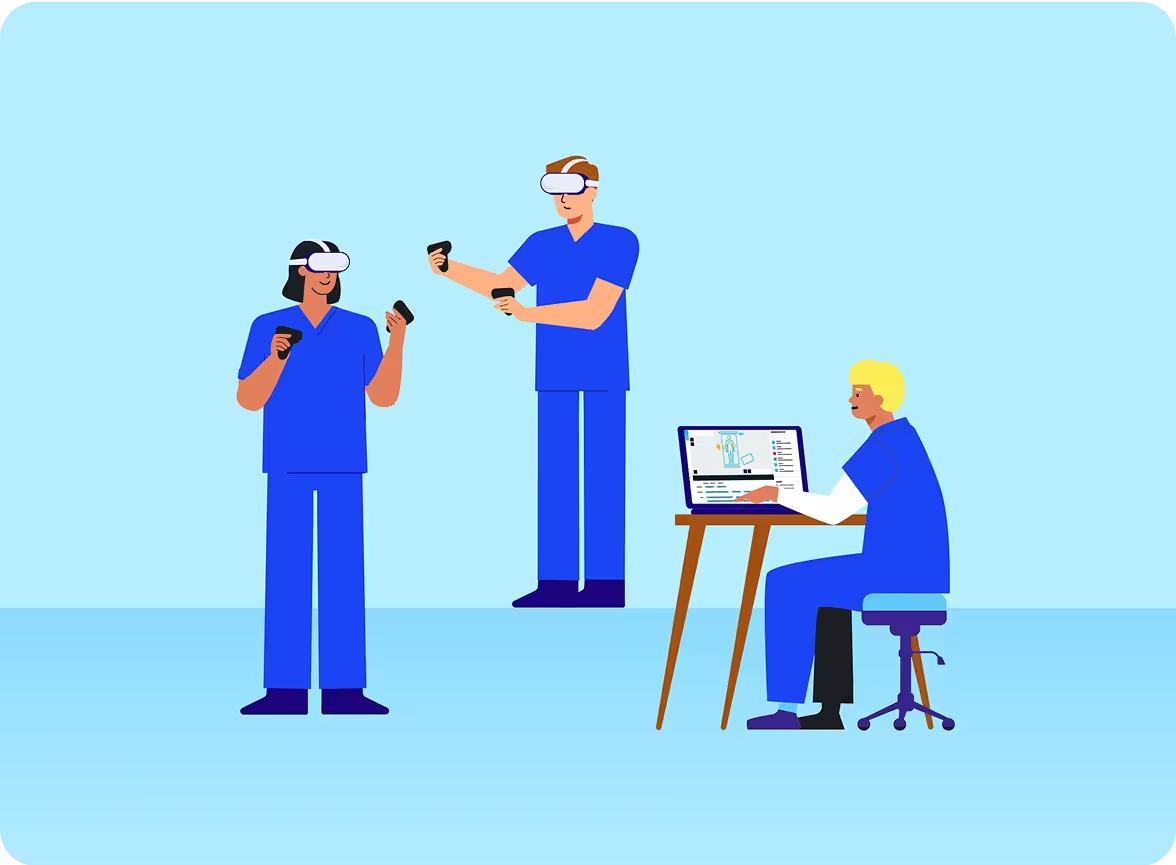
Observation
Peers can learn by actively observing the simulation on their computers or joining the simulation as a “ghost” in virtual reality.

All Scenarios Included
Every subscription comes with access to the growing UbiSim catalog of peer-reviewed scenarios, plus all custom scenarios shared from the UbiSim Community.

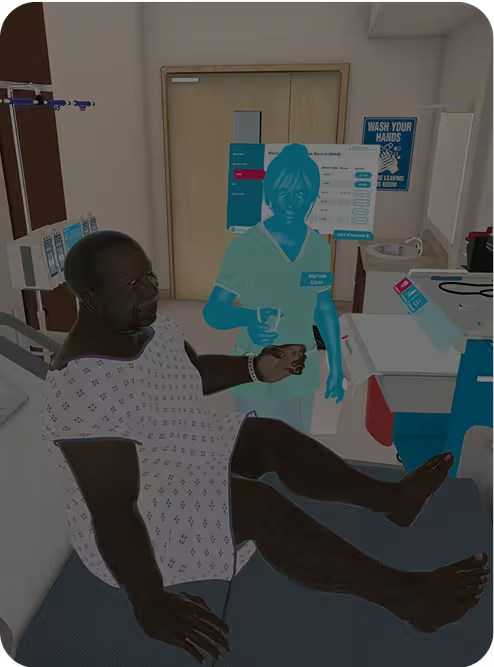
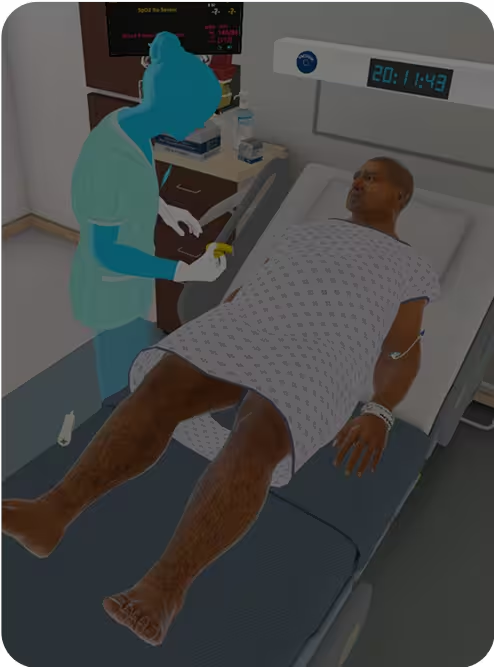
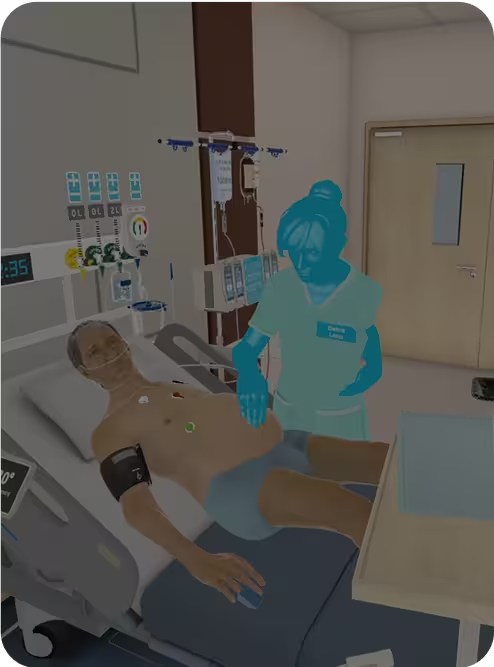
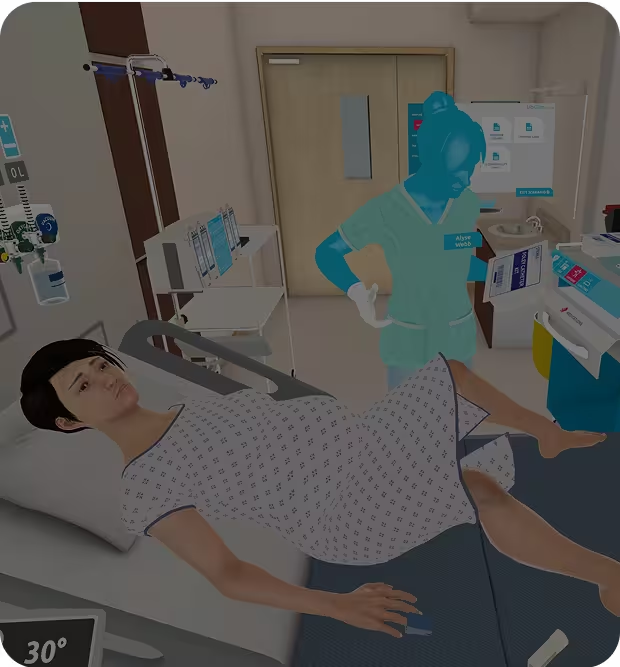
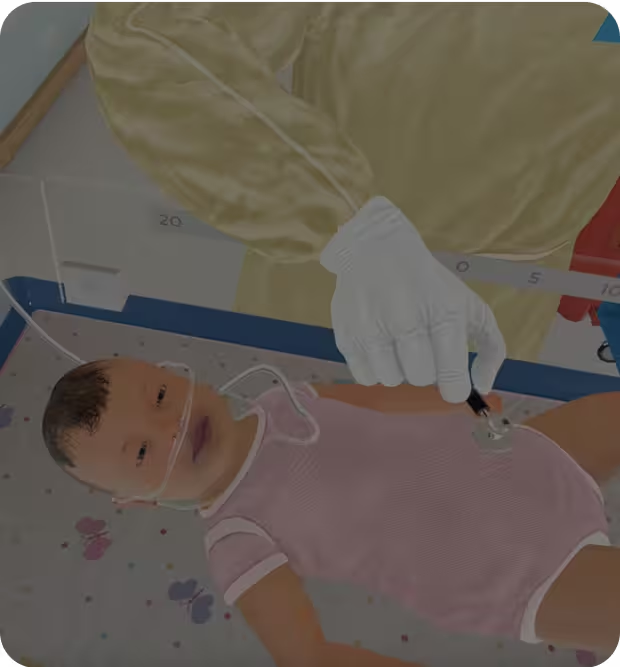


Customize or Build Any Scenario
In addition to UbiSim's expansive catalog of scenarios designed to meet INACSL and Next Generation NCLEX® standards, UbiSim’s Intuitive Editor™ empowers anyone to customize or create scenarios.
Meet nurses where they are
Reinforce critical thinking
Simplify custom simulation



Implementation Designed to Fit Your Team’s Needs
Whether you're beginning virtual simulation for the first time or scaling across multiple campuses or sites, we offer flexible implementation packages that help you launch with confidence, customize your experience, and get the support you need.
“We have a very robust simulation program with a lot of simulations that we developed ourselves, so we we’re really glad to have the ability to translate those custom scenarios into UbiSim.”
Simulation Coordinator & Adjunct Instructor
Community College of Denver
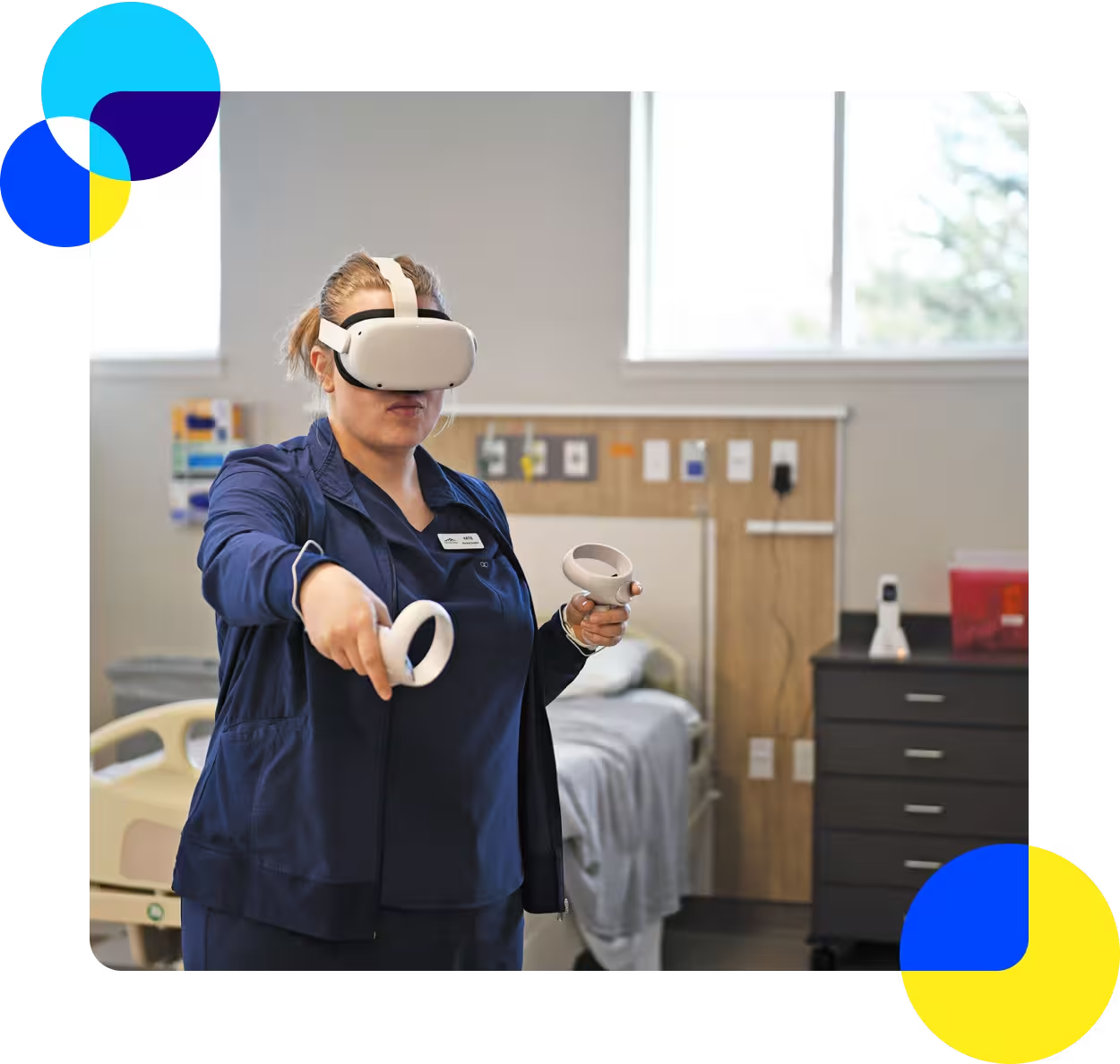
Experience Virtual Reality Nursing Training
Discover why UbiSim is the most immersive and authentic experience for VR simulation.




